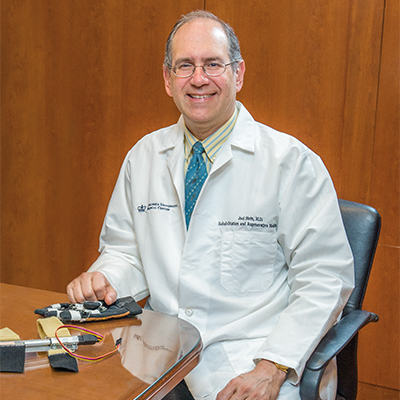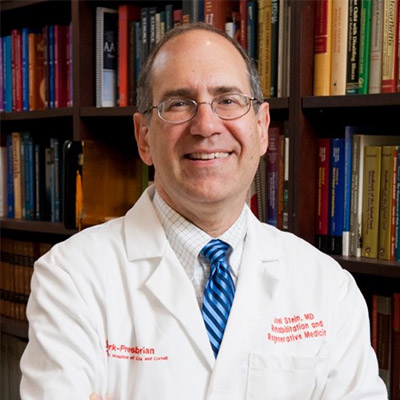It is estimated that two-thirds of the more than 800,000 individuals in the United States who have a stroke will require rehabilitation services. Post-acute care plays a critical role in a patient’s recovery, and yet the criteria influencing the level of care is subjective and not well established. Presently post-acute rehabilitative care in the U.S. is generally provided in either an inpatient rehabilitation facility, which provides a more intensive level of therapy, or a skilled nursing facility. The lack of a well-validated decision support tool adds to variations in practice.

Dr. Joel Stein
On behalf of the Northeast Cerebrovascular Consortium Stroke Rehabilitation and Recovery Delphi Study Group, Joel Stein, MD, Physiatrist-in-Chief, NewYork-Presbyterian Hospital, led a study to delineate key factors influencing the selection of post-acute level of care for these patients. Their investigation employed a four-round Delphi process to refine a list of factors by an invited panel of 32 experts from throughout the United States. These included physicians, physical therapists, occupational therapists, speech-language pathologists, nurses, stroke survivors, administrators, policy experts, and representatives from insurance companies.
To the researchers’ knowledge, this is the first study to use the Delphi methodology to examine post-stroke clinical decision-making and to assemble a list of factors as a first step to develop, test, and validate a clinical decision support tool.
Panelists participated in an initial brainstorming session to identify factors that should be considered in determining post-acute discharge level of care. This initial meeting generated 207 factors grouped into several categories and ultimately consolidated to 15 factors for consideration. In the final round, the following 9 factors were rated with Likert scores ranging from 5 (most important) to 1 (not important) with percentage of panelists who provided a rating of 4 or above:
- Likelihood to benefit from an active rehabilitation program (97 percent)
- Need for clinicians with specialized rehabilitation skills (94 percent)
- Need for active and ongoing medical management and monitoring (84 percent)
- Ability to tolerate an active rehabilitation program (74 percent)
- Need for caregiver training to return to the community (48 percent)
- Family/caregiver support (39 percent)
- Likelihood to return to community/home (39 percent)
- Ability to return to physical home environment (32 percent)
- Premorbid dementia (16 percent)
Study findings, which were published in the March 2022 issue of Stroke, provide a novel identification and ranking of clinical and environmental factors deemed significant in determining the most fitting level of post-acute care for stroke survivors. The authors plan to validate these factors in a clinical sample and create a decision support tool and verify their utility in clinical care.




